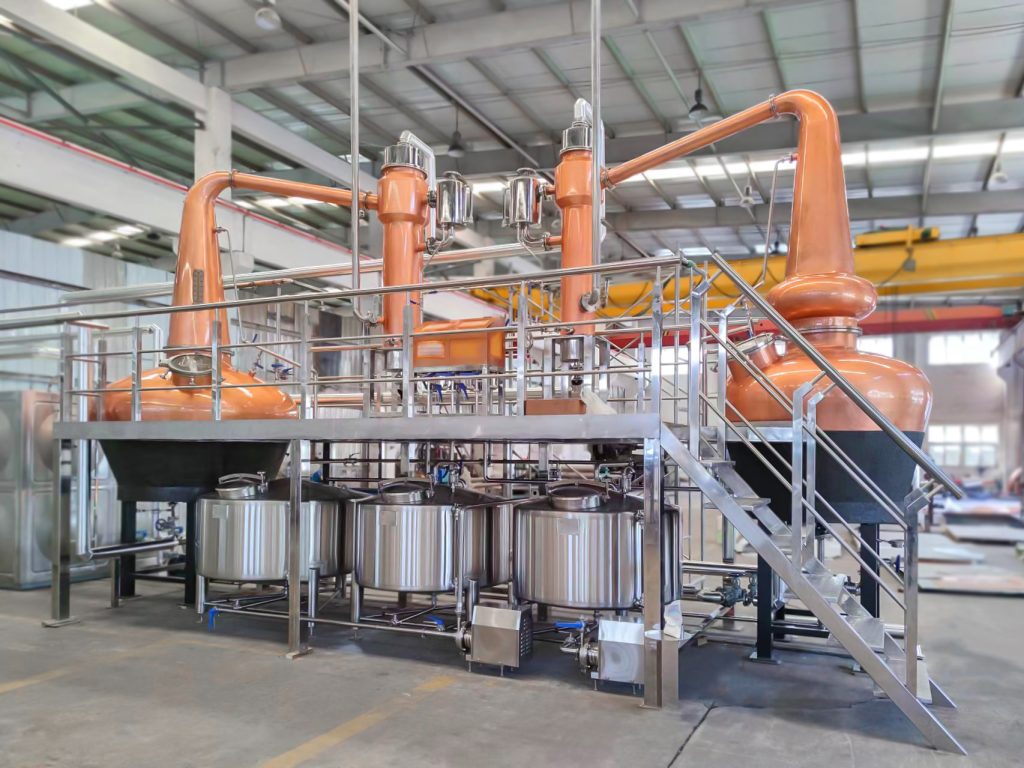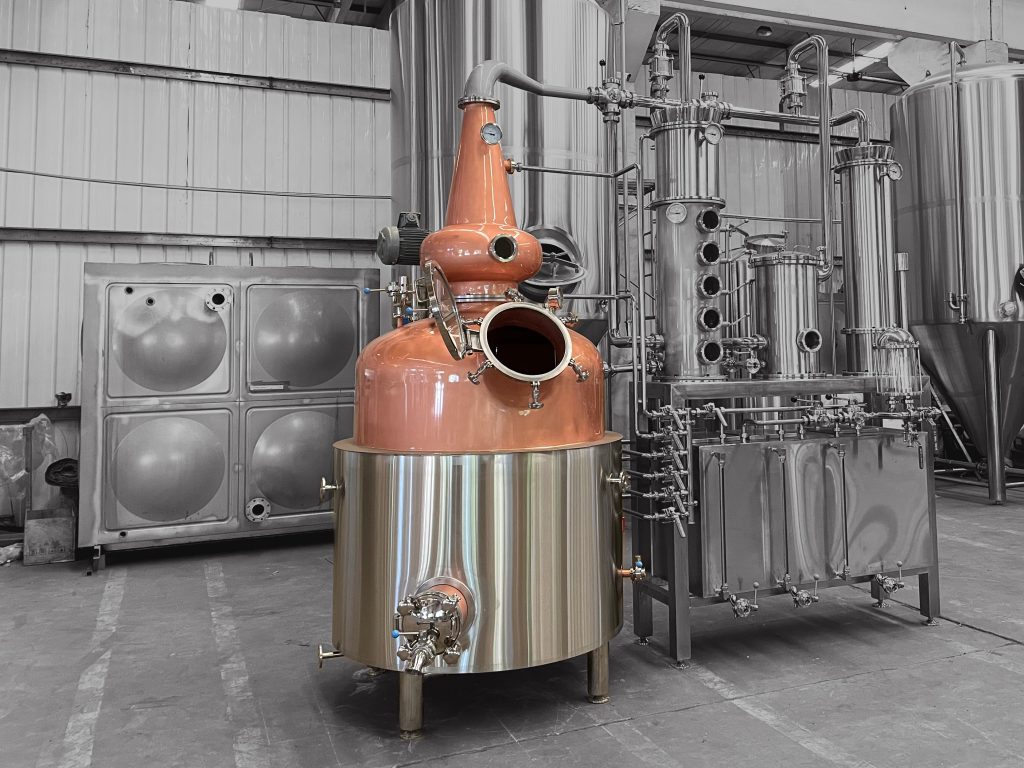Введение
Understanding the intricacies of a distillation column is crucial for industries ranging from petrochemical to food and beverages. This blog aims to answer the question: How does a distillation column work? By delving into its components, operation principles, types, and applications, we will provide a comprehensive overview of this essential industrial apparatus.
Components of a Distillation Column

To understand how does a distillation column work, it is essential first to identify its key components:
- Column Shell: The main body that houses the internal components.
- Trays or Packing: Used to increase the contact area between vapor and liquid.
- Reboiler: Heats the bottom liquid to generate vapor.
- Конденсатор: Cools the top vapor to produce a liquid distillate.
- Feed Inlet: The entry point for the mixture to be separated.
- Bottoms Outlet: Removes the heavier, less volatile components.
- Distillate Outlet: Removes the lighter, more volatile components.
Table 1: Key Components and Functions of a Distillation Column
| Компонент | Функция |
|---|---|
| Column Shell | Houses the internals of the distillation column. |
| Trays/Packing | Increases contact area for vapor-liquid interaction. |
| Reboiler | Generates vapor by heating the liquid mixture. |
| Конденсатор | Converts vapor back to liquid form. |
| Feed Inlet | Entry point for the mixture to be separated. |
| Bottoms Outlet | Exit for the heavier, less volatile components. |
| Distillate Outlet | Exit for the lighter, more volatile components. |
Operating Principles of a Distillation Column
Vapor-Liquid Equilibrium
A distillation column operates on the principle of vapor-liquid equilibrium. When a liquid mixture is heated, the more volatile components vaporize first. As these vapors rise through the column, they encounter cooler, descending liquid, allowing for repeated vaporization and condensation processes. This interaction enhances the separation efficiency.
Reflux Ratio
The reflux ratio, the ratio of the liquid returned to the column to the distillate taken off, is a critical parameter in how does a distillation column work. A higher reflux ratio increases the separation efficiency but requires more energy, while a lower reflux ratio is less efficient but more economical.
Types of Distillation Columns
Continuous Distillation Columns
Continuous distillation columns are designed for the ongoing separation of components. They are commonly used in large-scale industrial applications, such as refining crude oil. These columns operate continuously, with the feed entering and products being removed simultaneously.
Batch Distillation Columns
Batch distillation columns are used for smaller-scale operations and are ideal for processing different batches of feedstock. In this process, a fixed amount of feed is processed in a series of steps, with the composition of the distillate changing over time.
Table 2: Comparison of Continuous and Batch Distillation Columns
| Особенность | Continuous Distillation Columns | Batch Distillation Columns |
|---|---|---|
| Operation Mode | Непрерывный | Партия |
| Industrial Application | Large-scale | Small to medium-scale |
| Эффективность | Выше | Ниже |
| Гибкость | Ниже | Выше |
| Потребление энергии | Выше | Ниже |
Applications of Distillation Columns
Distillation columns are integral to various industries, each leveraging the technology for specific applications:
Petrochemical Industry
In the petrochemical industry, distillation columns are used to separate crude oil into various fractions, such as gasoline, diesel, and kerosene. The process involves complex multi-stage distillation to achieve the desired purity levels.
Пищевая промышленность и производство напитков
In the food and beverage industry, distillation columns are essential for producing alcoholic beverages like whiskey and vodka. The columns help in concentrating the alcohol content and removing impurities to ensure a high-quality product.
Фармацевтическая промышленность
The pharmaceutical industry uses distillation columns to purify solvents and active ingredients. This process ensures that the final products meet stringent purity standards required for medical applications.
Factors Affecting Distillation Column Performance

Feed Composition
The composition of the feed mixture significantly impacts how does a distillation column work. A mixture with closely boiling components requires more stages for effective separation compared to a mixture with widely different boiling points.
Column Design
The design of the column, including the type and arrangement of trays or packing, affects its performance. Columns with more stages or efficient packing provide better separation but at a higher cost and energy consumption.
Operating Conditions
Operating conditions, such as temperature, pressure, and reflux ratio, play a crucial role in the efficiency of a distillation column. Optimal settings ensure maximum separation efficiency and energy utilization.
Table 3: Factors Affecting Distillation Column Performance
| Фактор | Impact on Performance |
|---|---|
| Feed Composition | Determines the number of stages required for separation |
| Column Design | Influences the efficiency and cost of the separation process |
| Operating Conditions | Affects the energy consumption and separation efficiency |
Устранение распространенных проблем
Flooding
Flooding occurs when the liquid flow rate exceeds the vapor flow rate, causing the liquid to accumulate on the trays or packing. This issue can be addressed by adjusting the feed rate or reducing the reflux ratio.
Weeping
Weeping happens when the vapor flow rate is too low, allowing liquid to leak through the trays without proper contact. Increasing the vapor flow or reflux ratio can mitigate this problem.
Fouling
Fouling refers to the accumulation of impurities on the trays or packing, reducing the efficiency of the column. Regular maintenance and cleaning are necessary to prevent this issue.
Conclusion: How Does a Distillation Column Work
Understanding how does a distillation column work is crucial for optimizing its performance and ensuring efficient separation processes. By comprehending the components, operating principles, types, and applications, industries can leverage this technology to achieve desired purity levels in various products.
Часто задаваемые вопросы
Какова основная функция дистилляция column?
The primary function of a distillation column is to separate mixtures based on differences in their boiling points, resulting in purified components.
How does feed composition affect the distillation process?
Feed composition affects the number of stages required for separation. Mixtures with closely boiling components need more stages for effective separation.
What is the difference between continuous and batch distillation?
Continuous distillation operates continuously with simultaneous feed input and product removal, suitable for large-scale operations. Batch distillation processes fixed amounts of feed in steps, ideal for smaller-scale applications.
What are common issues faced in distillation columns?
Common issues include flooding, weeping, and fouling, which can be addressed by adjusting operating conditions and performing regular maintenance.
Why is the reflux ratio important?
The reflux ratio is crucial as it influences the separation efficiency and energy consumption of the distillation column. A higher reflux ratio enhances separation but requires more energy.
